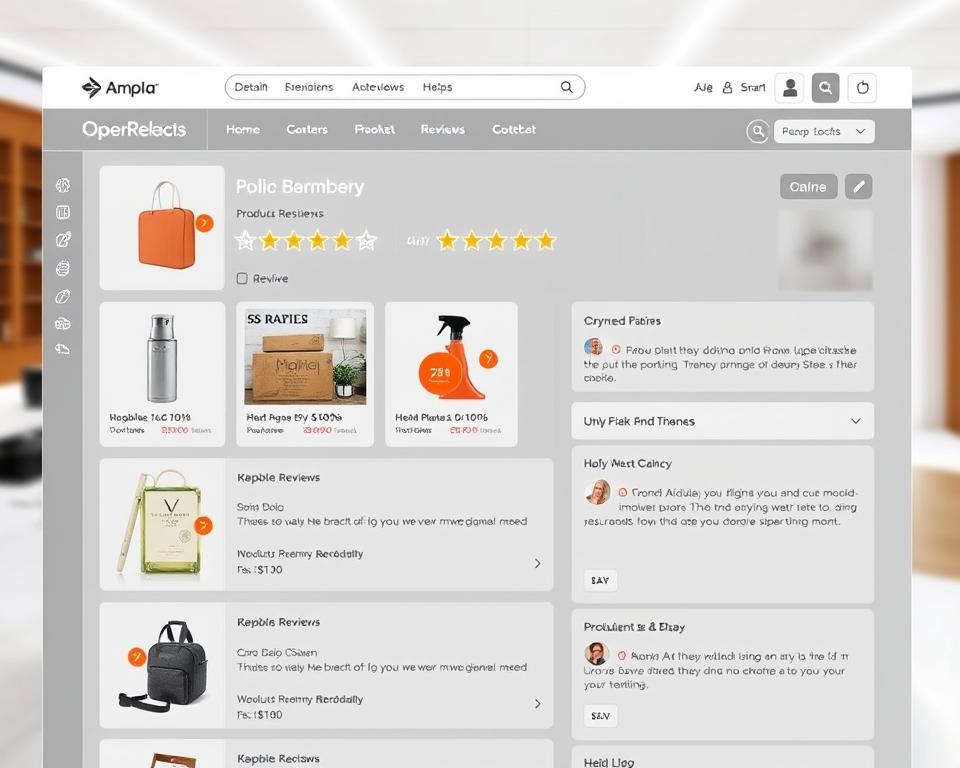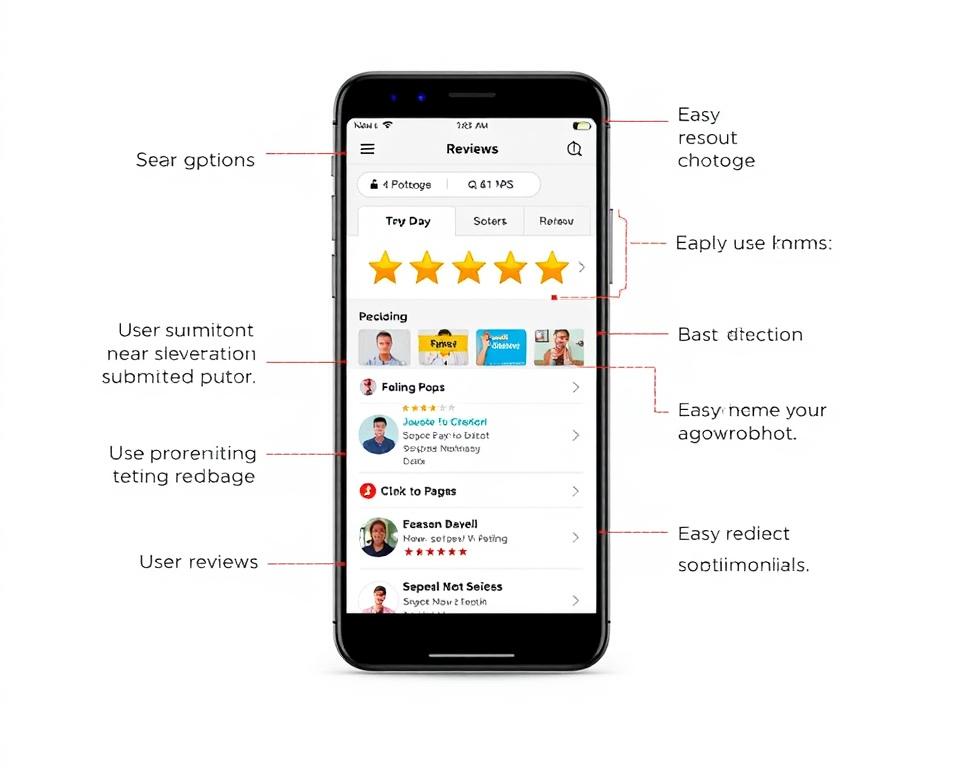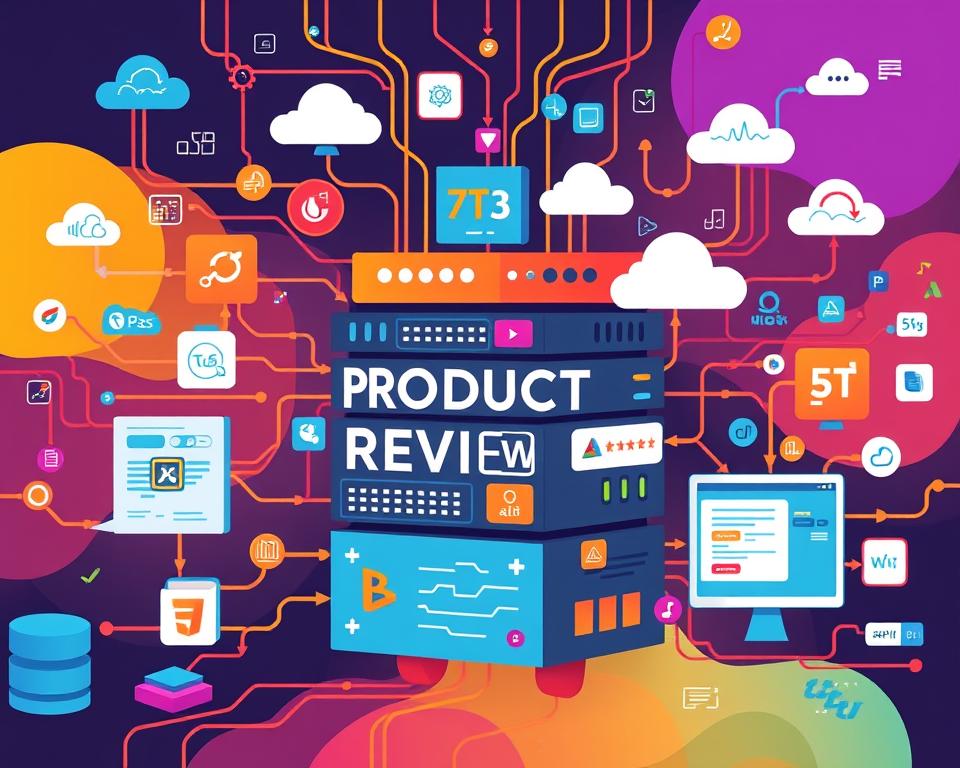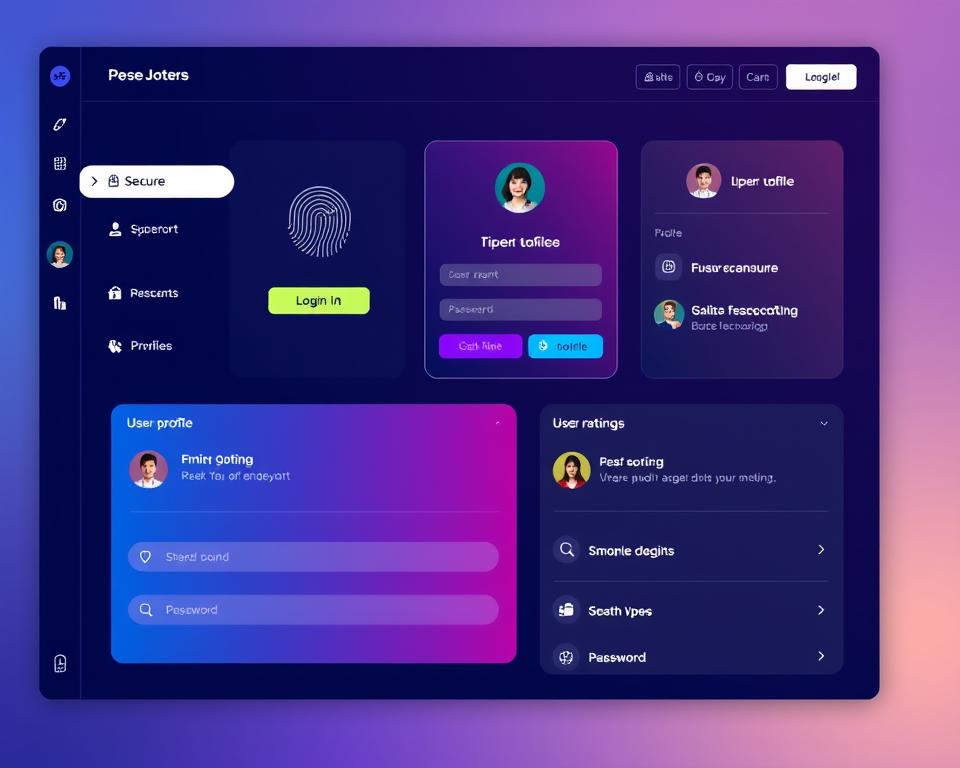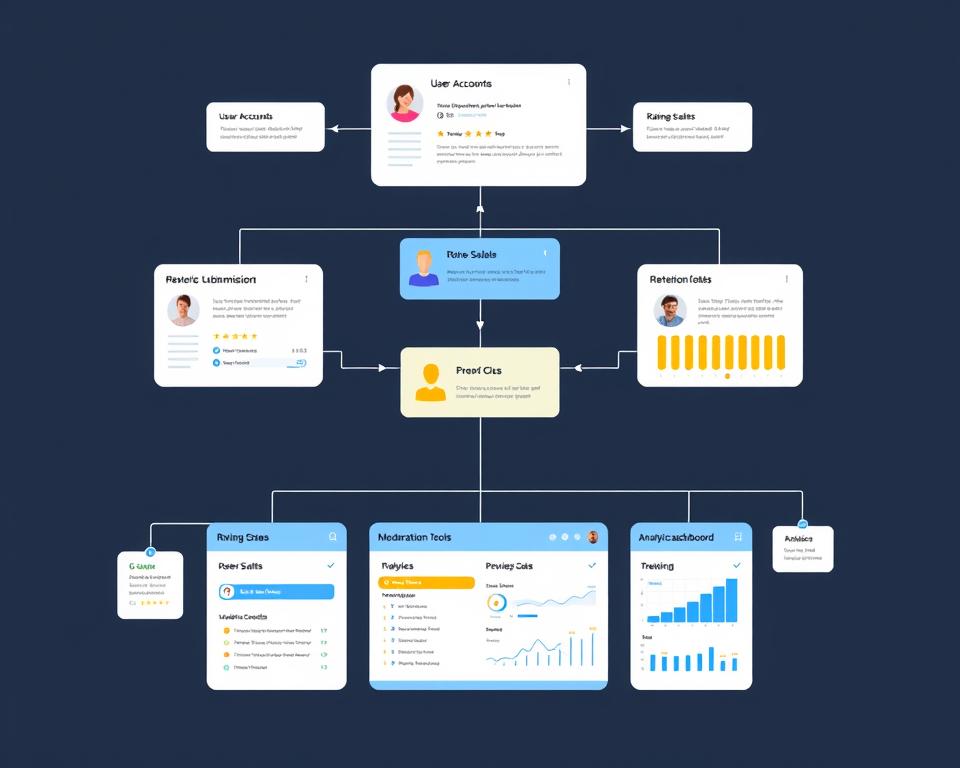In today’s world, online reviews play a big role in our buying choices. Sites like Trustpilot have changed how we look at products and services. They offer real feedback from customers. Now, more people want to make their own review apps to compete with the big names.
This article will show you how to make a review app like Trustpilot. We’ll look at the market, the key features of review apps, and what tech you need. By the end, you’ll know how to make a review app that stands out.
Table of Contents
Key Takeaways
- Understand the current product review platform market and its leading players
- Identify the core features and essential technology stack required for building a review app
- Learn the development process for creating a Trustpilot-like product review platform
- Explore user authentication, review system architecture, and rating mechanisms
- Discover strategies for ensuring security, data protection, and analytics capabilities
Understanding the Product Review Platform Market
In today’s digital world, product review platforms are key for making choices. Sites like Trustpilot, Yelp, and Google Reviews help businesses manage their image online. They also help shoppers make smart buys. Knowing how the review platform market works is vital for any business wanting to use these tools well.
Current Market Leaders and Their Features
The review platform market is led by a few big names. Trustpilot is known for its detailed review tools, like feeling analysis and reply management. Yelp focuses on local reviews, while Google Reviews uses its huge user base to offer a wide review platform tied to its search engine.
Market Size and Growth Potential
The review platform market has grown a lot lately. This growth is because online reviews are now more important than ever. Reports say the global review platform market will hit billions in value by the end of the decade. This shows how important these platforms are for businesses to stay competitive.
Revenue Models for Review Platforms
Review platforms make money in different ways. They offer subscription services, where businesses pay for extra tools. They also make money from ads and premium services like special listings or analytics tools. Knowing how these review site monetization strategies work is key for businesses to succeed in this space.
| Review Platform | Key Features | Revenue Model |
|---|---|---|
| Trustpilot |
|
|
| Yelp |
|
|
| Google Reviews |
|
|
By grasping the main players, market trends, and how they make money, businesses can craft smart plans. These plans help them use these platforms to improve their online image. This can lead to more customer engagement and higher sales.
Core Features of Modern Review Applications
Modern review apps have grown to meet the need for reliable product and service reviews. They offer features that help users make smart choices and businesses manage their online image. These apps are key in today’s digital world.
At the core are user-generated reviews. These let people share their thoughts on products and services. It makes things more open and builds a community where people trust each other’s opinions.
These apps also have rating systems for detailed feedback. Users can give ratings from simple stars to complex scores. These ratings are vital in shaping what people think and buy.
Another important part is the business profile feature. It lets companies manage their online image. They can share info, products, and respond to reviews. This helps them connect with customers and solve any issues.
Review apps also have search capabilities for easy review finding. Users can filter by category, location, or keywords. This makes it easier to find what you need fast.
Many apps also link to e-commerce platforms and social media. This makes it easy to use reviews in your daily life. It also helps businesses use review data to improve their marketing.
In summary, modern review apps are essential for both users and businesses. They help make informed choices, build trust, and increase engagement online.
Essential Tech Stack for Building a Review Platform
To build a strong review platform, you need a tech stack that works well. It should handle all the features and user interactions smoothly. Each part, from frontend frameworks to backend and database, is key for a great user experience.
Frontend Technologies and Frameworks
The frontend is where users interact with the app. React and Vue.js are top choices for modern, interactive interfaces. They offer tools for building scalable, efficient, and attractive review app tech stack.
Backend Infrastructure Requirements
The backend manages user requests and data. Backend technologies like Node.js (with Express.js) or Ruby on Rails are solid bases. They handle routing, API management, and server-side rendering for a reliable platform.
Database Selection and Architecture
Choosing the right database is key for handling lots of content and reviews. NoSQL databases like MongoDB or Cassandra are great for this. They offer flexible models and scalability. Relational databases like PostgreSQL or MySQL can also work, depending on the app’s needs.
| Component | Popular Technologies |
|---|---|
| Frontend Frameworks | React, Vue.js, Angular |
| Backend Technologies | Node.js (Express.js), Ruby on Rails, Python (Django) |
| Databases | MongoDB, Cassandra, PostgreSQL, MySQL |
“The key to building a successful review platform lies in selecting the right tech stack that can handle the complex requirements of user-generated content, ratings, and business integrations.”
How to Build a Product Review App Like Trustpilot
Creating a review app development platform like Trustpilot needs careful planning. The app building process has several key stages. Each stage is important for a successful Trustpilot clone. Let’s look at the main steps.
First, do thorough planning and market research. Know your target audience, their needs, and what makes your app special. This groundwork helps guide the design and development.
- Create a strong user experience (UX) design. Focus on easy navigation, smooth interactions, and good looks. Make sure your app meets user and industry standards.
- Build a scalable and secure backend infrastructure. This supports the app’s main features, like user management and data storage.
- Add advanced review management features. This includes rating systems and review verification. It helps make user experiences trustworthy and clear.
- Include comprehensive data analytics and reporting. This gives insights to users and businesses, helping them make better decisions.
Always test and check the app’s quality during development. This ensures it works well and meets standards.
“The key to building a successful review app like Trustpilot lies in a meticulous approach that balances innovative features, user-centric design, and robust backend architecture.”
By following these steps carefully, you can make a review app development platform. It will not only be like Trustpilot but also offer something new. This can help it stand out in the product review platform market.
| Key Considerations | Description |
|---|---|
| User Experience Design | Intuitive navigation, seamless interactions, and visually appealing aesthetics |
| Backend Infrastructure | Scalable and secure platform to support core functionalities |
| Review Management Features | Advanced rating systems, review verification, and user-friendly feedback mechanisms |
| Data Analytics and Reporting | Comprehensive insights for businesses and users to drive informed decision-making |
User Authentication and Profile Management
In today’s world, user authentication and profile management are key. They build trust, security, and personalization. These elements are vital for a smooth and enjoyable user experience.
Registration and Login Systems
A strong registration and login system is the base of user authentication. Users can sign up with email, social media, or biometric data. This makes the platform secure and easy to use.
By making sign-up and sign-in simple, users can access their accounts easily. They can then share reviews confidently.
User Roles and Permissions
It’s important to have different user roles and permissions. This includes reviewers, business owners, and administrators. Each group should have specific access levels.
This setup keeps the platform running smoothly. It ensures everyone can contribute in their own way.
Profile Customization Options
Allowing users to customize their profiles is powerful. It lets them show their unique identity and build a brand. Features like profile pictures and bios help users feel part of the community.
This approach strengthens the platform’s focus on users. It builds trust and credibility.
| Feature | Benefit |
|---|---|
| Secure Registration and Login | Enhances user trust and platform security |
| Defined User Roles and Permissions | Maintains platform integrity and efficient management |
| Profile Customization Options | Fosters user identity, credibility, and community engagement |
By adding these features, review platforms become secure and personalized. They empower users to share their experiences. This builds trusted relationships with businesses.
The development of these features is key. It helps create a comprehensive and user-focused review platform.
Implementing the Review System Architecture
Creating a solid review system design is key for a great user experience. At the core of a product review app is the ability to collect feedback smoothly and make review submission easy. With a well-designed architecture, you can make the user journey smooth and use user content effectively.
The review system architecture has several important parts:
- Review Submission Form: This is where users can share their experiences, ratings, and feedback. The form should be easy to use, work well on mobile, and be optimized for review submission.
- Data Storage and Management: The feedback must be safely stored and organized for easy access and analysis. This might involve using a strong database solution and setting data governance policies.
- Review Display and Presentation: The content should be shown in a way that’s both attractive and helpful. This lets users easily find, filter, and interact with the review system design.
By carefully planning and putting these key elements into action, you can build a review platform that focuses on the user. It encourages feedback collection and builds trust in your user community.
“The key to building a successful review platform is to prioritize the user experience at every stage of the review system design.”
Rating Mechanisms and Scoring Algorithms
Rating systems and scoring algorithms are key in a product review app. They help users see the quality and trustworthiness of reviews. This shapes the app’s credibility and user experience.
Star Rating Implementation
The star rating system is well-known. Users give stars based on their satisfaction. A good star rating system needs careful design. It should consider the rating scale, feedback options, and how it looks.
Review Verification Process
It’s important to make sure reviews are real and trustworthy. The verification process should use both automated and manual checks. This helps spot and fix fake or biased reviews.
Weighted Scoring Systems
Weighted scoring systems give a more detailed look at products or services. They consider things like the reviewer’s credibility and the review’s depth. This makes ratings more accurate and helpful for users.
| Rating Algorithm | Description | Key Considerations |
|---|---|---|
| Star Rating | A rating system where users can assign a certain number of stars to a product or service. |
|
| Review Verification | A process to ensure the authenticity and reliability of reviews. |
|
| Weighted Scoring | A system that takes into account various factors to generate a more accurate rating. |
|
By designing and implementing these systems well, a product review app can be a reliable place for users. It helps them make informed choices about products and services.
Business Profile and Company Verification
In today’s digital world, having a strong online presence is key for businesses. Creating and managing accurate business profiles on review platforms is vital. These profiles highlight a company’s offerings and let customers share their feedback.
Company verification is a crucial step. It makes sure business listings are real, stopping fake or misleading info. Review sites use checks like phone or address confirmations to prove a company’s profile is genuine.
- Claimed listings, where business owners manage their profiles, are more reliable to customers.
- Business profiles that are detailed and up-to-date help build trust and credibility.
- Keeping profiles current with changes or new products keeps customers interested and informed.
By focusing on business profiles and verification, companies can build a solid online reputation. This boosts their visibility in the fast-changing review platform world.
“Maintaining accurate and up-to-date business profiles is essential for building trust and credibility in the digital marketplace.”
Review Moderation and Content Management
Product review platforms are getting more popular. This means it’s more important to manage reviews well. Businesses need to balance creating a real review space with keeping it safe from review moderation, content management, and automated filtering issues.
Automated Moderation Tools
Automated moderation tools are key for review sites. They use AI to spot fake reviews, spam, or bad content fast. These tools learn from data to catch and remove harmful content before it’s seen by everyone.
Manual Review Processes
Even with AI, manual review processes are vital. Human moderators check flagged content and decide what’s real. This mix of AI and humans makes sure reviews are well-checked and fair.
Content Filtering Systems
Review sites also need strong content filtering systems. These systems keep out bad words, hate speech, and more. They make sure users have a good experience. Advanced tech, like natural language processing, helps catch and remove bad content.
By using both AI and human checks, review sites can be safe and honest. This lets users trust the reviews and make better choices.
API Integration and Third-party Services
In today’s digital world, customer reviews and ratings are key in making buying decisions. Using API integration and third-party services can boost a product review platform like Trustpilot.
By linking with popular social media, your app lets users share feedback on many platforms. This increases the reach of reviews. Also, using geolocation services gives insights into local trends and preferences. This helps businesses adjust their strategies.
Being able to aggregate data from different review sources gives a full view of a company’s reputation. This helps users make better choices. It also makes your platform a top choice for detailed product and service reviews.
| API Integration Benefits | Third-party Service Examples |
|---|---|
|
|
By using API integration and third-party services wisely, your app can become a key platform. It helps users make smart choices and boosts businesses’ online image and customer interaction.
Mobile Responsiveness and App Development
In today’s world, having a mobile-responsive design and a dedicated app is key for any review platform. Smartphones and tablets are taking over, making it vital for businesses to make sure their platforms work well on mobile.
iOS and Android Considerations
When making a review app, it’s important to think about what iOS and Android users want. Each system has its own rules for design and features. Creating a great experience for both requires careful planning and attention to detail.
Cross-platform Development Strategies
To build apps for both iOS and Android, businesses can use tools like React Native or Flutter. These frameworks let developers write one code that works on both platforms. This saves time and money while keeping the app optimized for each system.
| Feature | iOS App | Android App |
|---|---|---|
| User Interface | Adheres to Apple’s Human Interface Guidelines | Follows Material Design principles |
| Native Integrations | Seamless integration with iOS system features (e.g., Touch ID, Siri) | Tighter integration with Android’s built-in functionalities |
| Performance | Optimized for the iOS ecosystem, leveraging hardware acceleration | Optimized for the diverse Android device landscape |
By focusing on mobile-responsive design and creating dedicated apps, businesses can give users a top-notch experience on all devices. This meets the needs of the growing number of mobile users.
Security Measures and Data Protection
The digital world is changing fast, making data security and GDPR compliance more important than ever. When creating a product review app like Trustpilot, keeping user data safe is key. It’s vital to use encryption and tackle web threats in many ways to protect sensitive info.
Encryption is at the heart of good data protection. It keeps user data safe from hackers, reducing the chance of data loss. This boosts data security and shows you care about GDPR compliance. It helps build trust with users and keeps you in line with the law.
- Implement robust encryption algorithms to protect user data
- Adhere to the latest GDPR guidelines to ensure regulatory compliance
- Regularly audit and update security measures to address emerging threats
Review platforms also need to fight off common web threats like XSS, SQL injection, and DDoS attacks. Using top security practices and web application firewalls helps block these dangers. This keeps your platform safe from bad actors.
“Cybersecurity is no longer an option; it’s a necessity in today’s digital landscape.”
To make a secure and reliable review platform, you need a complete plan for data security, GDPR compliance, and risk management. Focus on these key areas to protect your users’ data. This builds trust and reliability, crucial for your app’s success.
Analytics and Reporting Features
In the world of product review platforms, data is key. It helps businesses grow and improve user experiences. By using strong analytics dashboard and performance metrics, companies can understand their platform better. They can also learn about user behavior.
Business Intelligence Tools
Adding business intelligence tools to your platform is very helpful. These tools track and analyze many things. This includes:
- User registration and activity trends
- Review submission and engagement rates
- Sentiment analysis of reviews
- Conversion rates and revenue generation
With this data, admins can make smart choices. They can improve user experience, grow the business, and make the review system better.
Performance Metrics
It’s important to watch key performance metrics closely. These metrics show how well your platform is doing. Some important ones are:
- Review volume and quality
- Average rating scores
- Response times for review moderation
- User retention and churn rates
- Conversion rates for businesses seeking reviews
By looking at these metrics, you can find ways to get better. You can improve your platform’s features. This makes sure your review system is useful for everyone.
User Behavior Analysis
Knowing how users behave is key to a good experience. Analytics tools give insights into how users move around, what they search for, and more. This helps in making your platform better.
“Data is the new oil, and analytics is the combustion engine.” – Clive Humby
By using analytics dashboard, performance metrics, and user behavior analysis, platforms can get valuable insights. They can improve their operations. This leads to great experiences for both businesses and users.
Conclusion
To make a successful product review app like Trustpilot, you need to understand the market well. You must know what users want and keep up with new tech. This guide offers insights to help entrepreneurs and developers build a top-notch review platform.
Success in a review app world means having a loyal user base. This includes both consumers and businesses. To get there, focus on features that build trust and make users feel engaged. Use strong authentication and easy-to-use review tools.
It’s also key to have advanced algorithms and moderation to keep feedback real and reliable. As the demand for review platforms grows, offering something unique is essential. Use the latest tech, make easy integrations, and use data to stand out. This way, your app can become a go-to for businesses and consumers alike.







